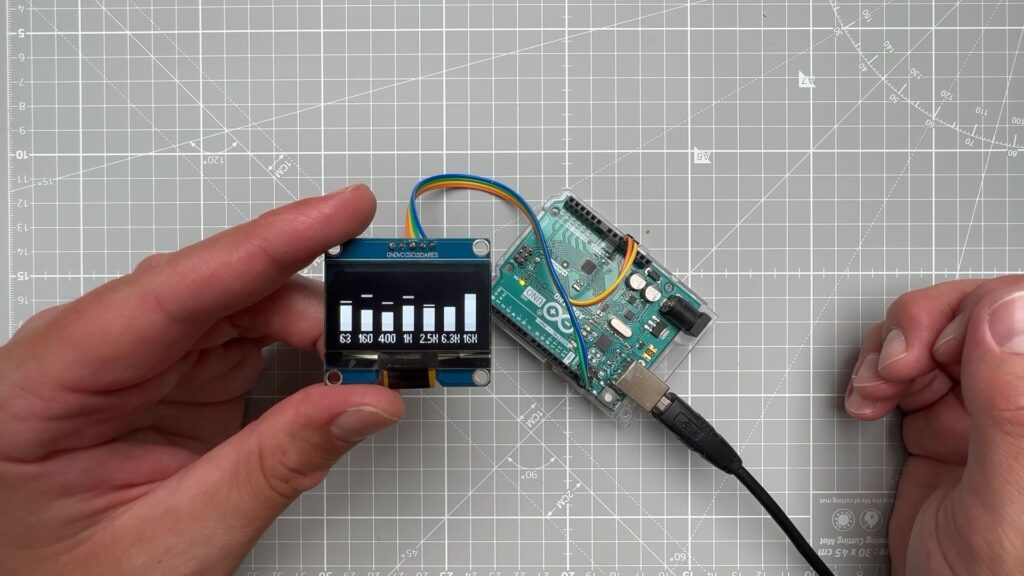26

You’ve probably heard that there isn’t any sound in space. That’s because sound is vibration traveling through a medium, like air or wood, and space is a mostly empty vacuum. The frequency of the vibration in a medium is the pitch of the sound and the amplitude is the volume. If you want a way to visualize the frequencies of the sounds around you, Vaclav Krejci (upir on YouTube) designed an Arduino-based audio analyzer that you can build.
Like the visualizer of the equalizer on an old stereo receiver, this displays the levels of several frequency bands within the audio it monitors. In this case, that audio is the sound around the device collected by an onboard microphone. It shows the levels for seven different frequencies: 63Hz, 160Hz, 400Hz, 1kHz, 2.5kHz, 6.3kHz, and 16kHz. Most devices like this use LEDs to show the levels, but this shows them on a OLED screen instead and that allows for more flexibility.
That OLED screen connects to an Arduino Uno Rev3 board, which uses a pair of DFRobot modules to work with the audio. The first is an analog mic board that performs amplification to boost the audio signal up to something usable. The second is the AudioAnalyzer board that breaks that audio signal down into seven frequencies. Krejci’s code is straightforward and simply displays seven bar graphs corresponding to the amplitude numbers provided by the AudioAnalyzer board.
Use this in space and it should show all zeroes. But use it here on Earth and it will help you analyze the sound around you.
The post Analyze the ambient sound around you with this Arduino setup appeared first on Arduino Blog.



